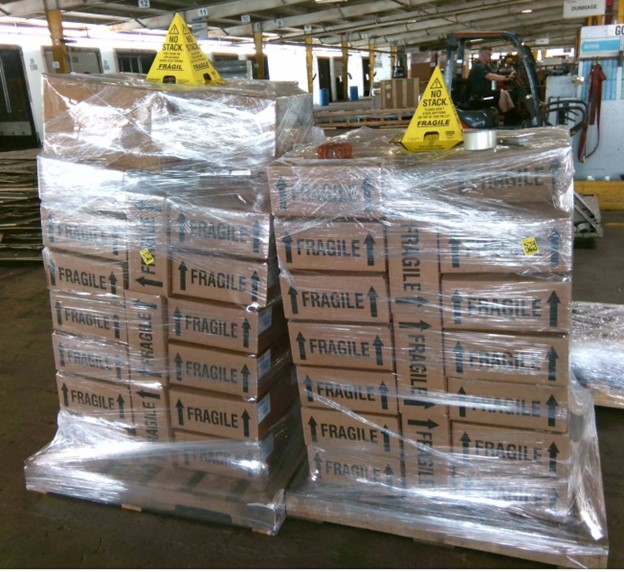-
07
Feb
No-Stack Cones

When should LTL shippers use No-Stack cones? Maybe the answer is NEVER.
Be mindful of the use of No-Stack cones as shown in the photo below. These cones are typically 8-10 inches tall and are considered by LTL carrier rules as part of the shipment packaging. That means when it comes to measuring a shipment to determine density, the height of the cones MUST be included. And LTL carriers typically will apply their Cubic Capacity or Density Minimum Charge rule by extending shipment height to 96 inches when cones are utilized. Many reclasses caused by the use of cones.
The pallets here were 52 and 60 inches tall. But the cones added 8 inches of height. Due to the larger cube measured by the carrier, this shipment realized a reclass which was valid and thus significantly increased the freight charges. Keep in mind that LTL carriers today make wide and extensive use of static dimensioners. Some are dimensioning upwards of 65% of their shipments. And when you add freight inspectors and supervisors who might also be measuring freight, they can get well over 70%. And cones are easy to spot on the dock, a mile away.
As you might guess, carriers do not like cones. Cones take up extra trailer space, and at times are placed on top of shipments that can actually support top freight. The carrier may have been able to place several loose low-weight cartons on top of these pallets, but was prevented from doing that due to the cones. Or the cones get in the way of their effective use of load bars. This shipment was clearly labelled as “Fragile” on every carton. That should have been sufficient to warn the carrier that improper loading could result in damage and thus a damage claim. Further, carriers typically require any “No Stack” requirements to be notated on the BOL. Using cones may not help the customer in the event of a damage claim if the BOL is not properly notated.
If you as an LTL shipper absolutely feels that you must use these No-Stack cones, you should also ensure you are auditing your freight charges against quotes. You may be paying a lot more for those cones than you think. The same applies for BOL notations advising the carrier to not double-stack the freight. Carriers will determine class application and apply rules such as Cubic Capacity and Density Minimum charge based upon the use of these cones as well as BOL notations. It may be far cheaper to let the carriers use their expertise and their equipment (load bars), to move your freight.
- (479) 461-1672
- Contact Us
